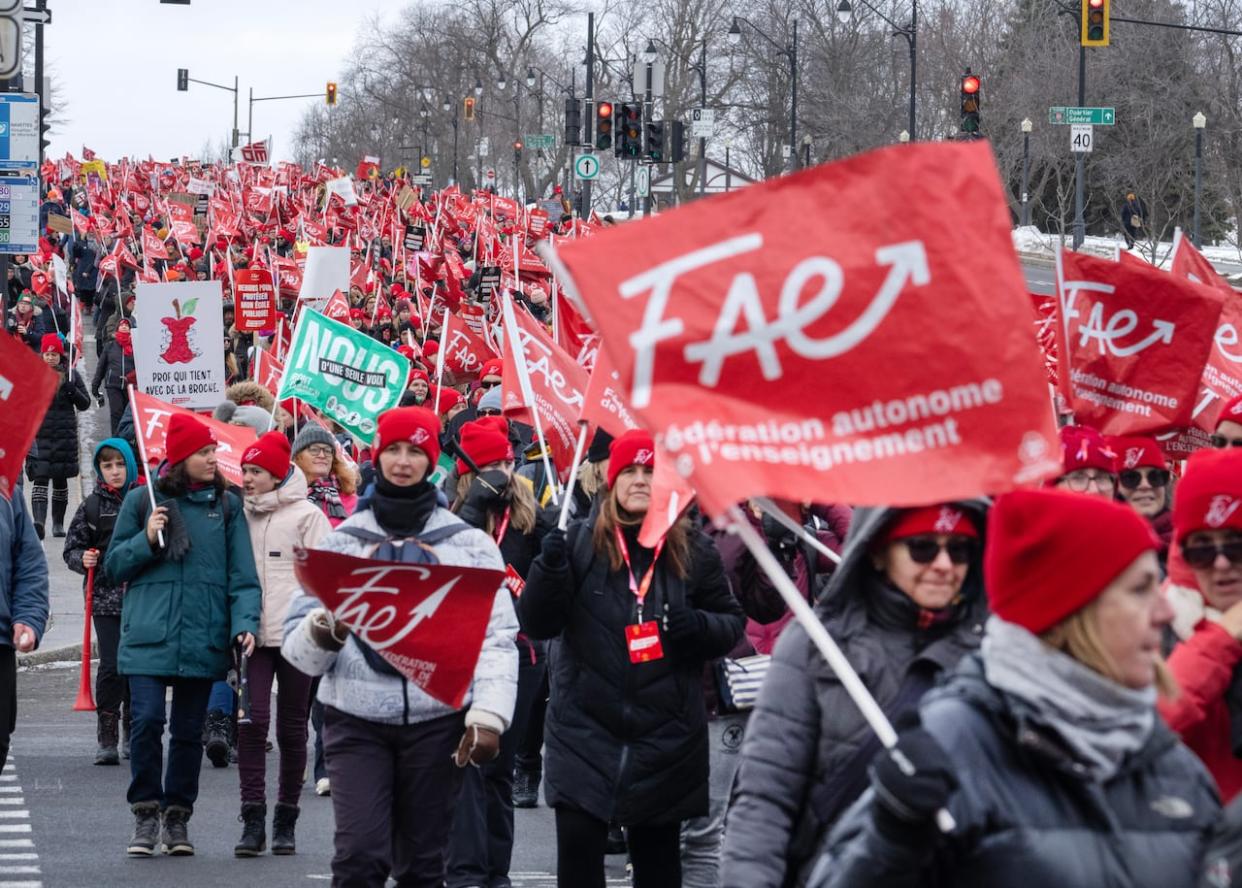FAE teachers' unions accept deal with Quebec after final vote

After a gruelling battle, the last union affiliated with the Fédération autonome de l'enseignement (FAE) has voted in favour of a tentative agreement with the Quebec government by a mere 13 yeas.
That means five FAE unions have voted in favour of the agreement, and four others have rejected it. The FAE represents more than 66,500 teachers across seven regions.
The agreement in principle came after 22 days of strike action, which closed about 800 schools and kept 368,000 students home. Some 40 per cent of teachers in the province's school system are represented by the FAE.
In a news release issued Friday afternoon, the FAE confirmed this last vote means the agreement in principle has been accepted. However, the result will be officially confirmed on Feb. 7.
The last union, the Syndicat de l'enseignement de la Haute-Yamaska (SEHY), situated in Granby, adopted the agreement by a majority proportion of 50.58 per cent. That's 569 for, 556 against and nine abstaining.
"Despite the adoption of the agreement in principle, the result sends a clear message to the government: This agreement is not sufficient to meet the needs of teachers and their students," said Sophie Veilleux, president of SEHY, in a news release.
Last month, Radio-Canada learned that the leaders of several unions affiliated with the FAE told their members not to accept the agreement in principle. The 2,000 members of SEHY were among those discouraged from approving the agreement.
Quebec Treasury Board President Sonia LeBel issued a statement Friday, saying "this is a negotiated agreement that addresses significant issues on both sides: It improves services, working conditions, work organization, and salaries."
It is evident that negotiation does not solve everything, she said.
"We will build on the progress made to continue working on certain elements, such as class composition, for example," LeBel said in the statement. "We have heard the message from the teachers."

